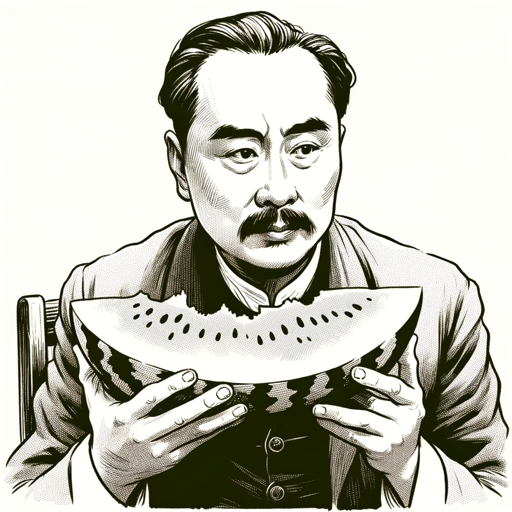Table to JSON-JSON conversion from tables easily.
AI-powered tool for converting tables to JSON format.
請直接上傳表格截圖
請直接複製貼上表格文字
Related Tools
Load MoreTable Maker
Table Maker Creates Table For You.

JSON Wizard
This agent specializes in converting varied text inputs into structured, precise JSON format, ideal for technical data structuring tasks

Table Helper
Transforms text data into tables, showing in text and HTML formats.

Table Creator
Um criador de tabelas a partir de texto

Text-to-Table Bot
Convert text input into table format

PDF to JSON Assistant
Generates complete JSON from PDFs, offering improvement tips if needed.
20.0 / 5 (200 votes)
Introduction to Table to JSON
Table to JSON is a specialized tool designed to convert structured tabular data into JSON format. Its primary function is to take input that is formatted as a table or dataset and transform it into a JSON object, making it easier to manipulate, store, and share across web-based platforms or applications. JSON (JavaScript Object Notation) is widely used in data interchange because of its simplicity and compatibility with modern programming languages. Table to JSON helps streamline this conversion process, offering both sample JSON outputs based on given data and the corresponding JSON schema that defines the structure of the resulting JSON data. This tool is particularly useful when dealing with datasets, spreadsheets, or other structured data that need to be integrated into web applications, APIs, or databases.

Main Functions of Table to JSON
Convert tabular data into JSON format
Example
A CSV file containing sales data for a company is uploaded, and Table to JSON converts it into a JSON object where each row is represented as a separate JSON entry.
Scenario
A developer working on a web application needs to integrate sales data into the frontend, and converting the CSV into JSON makes it easier to work with JavaScript or send the data via an API.
Generate sample JSON output
Example
Given a table of student names and grades, Table to JSON generates a sample JSON output like: {'students': [{'name': 'John Doe', 'grade': 'A'}, {'name': 'Jane Doe', 'grade': 'B'}]}
Scenario
An educator needs to visualize how student data would appear in JSON format for integration into a learning management system (LMS).
Generate JSON schema
Example
After converting a table of employee records (with fields such as 'name', 'position', and 'salary') into JSON, the tool generates a schema that describes each field’s data type and structure: {'type': 'object', 'properties': {'name': {'type': 'string'}, 'position': {'type': 'string'}, 'salary': {'type': 'number'}}}
Scenario
A backend developer is creating a REST API and needs a clear JSON schema to define the structure of incoming and outgoing data related to employee records.
Ideal Users of Table to JSON
Web and Application Developers
Developers working with web applications, mobile apps, or APIs that require data in JSON format would greatly benefit from Table to JSON. By automating the process of converting tabular data (such as CSV, Excel, or database tables) into JSON, it saves time and reduces errors when handling data across different layers of an application stack.
Data Analysts and Scientists
Data professionals who work with large datasets often need to share or manipulate data in various formats. Converting structured data into JSON makes it easier to handle in programming languages such as Python, JavaScript, and R, which are widely used for data analysis, machine learning, and visualization.

Steps to Use Table to JSON
Step 1
Visit aichatonline.org for a free trial without login, also no need for ChatGPT Plus.
Step 2
Prepare your input data, such as tables, spreadsheets, or text data that you want to convert into JSON format.
Step 3
Paste the data or upload the file containing the table or structured data into the tool’s interface.
Step 4
Click 'Convert' or follow the on-screen prompts to generate the JSON output and preview the result.
Step 5
Download or copy the JSON output for your project, and optionally, validate the JSON schema to ensure compatibility.
Try other advanced and practical GPTs
ATOM Cyber Threat Modeller
AI-powered cyber threat modeling tailored to your system architecture.

Web3 Social Activity
AI-powered Web3 Social Activity Tracker

吃瓜群众问鲁迅
AI-driven critique with Lu Xun’s insight.

学术论文专家
AI-Powered Academic Writing Assistant

Cartoonizer AI
AI-powered image cartoonization, reimagined.

PDF to Excel Toaster
AI-Powered PDF to Excel Conversion

Market Scout V2
AI-Powered Market Insights in Seconds.

きざむ文章
Refine your writing with AI precision
Mother Mater
Your AI-powered life and mental guide
Ikigai Journey - Your Purpose Explorer
Discover Your Ikigai with AI Guidance

BebuAI
AI-powered marketing and content solutions

微信小程序
AI-powered Mini Program for smart solutions

- Data Analysis
- Business Reports
- Automation
- Web Development
- APIs
Q&A on Table to JSON
What types of input data can I convert using Table to JSON?
Table to JSON allows you to convert structured data like tables, spreadsheets, and tabular text data into JSON format. You can paste the data directly or upload files such as CSV or Excel.
Is there a file size limit when converting data?
While there is generally no strict file size limit, larger files may take longer to process. It is recommended to ensure that your internet connection is stable for optimal performance with bigger files.
Can I validate the JSON output after conversion?
Yes, Table to JSON provides an option to generate a JSON schema, which can be used to validate the structure of the output JSON, ensuring it adheres to your expected data format.
Are there any prerequisites to use the tool?
No, you don't need to create an account or subscribe to a paid plan. You simply need a web browser and an internet connection to access and use the tool for free.
What are common use cases for Table to JSON?
Common use cases include converting academic data, financial spreadsheets, customer databases, or any tabular data into JSON format for use in web development, API integration, or data analysis.